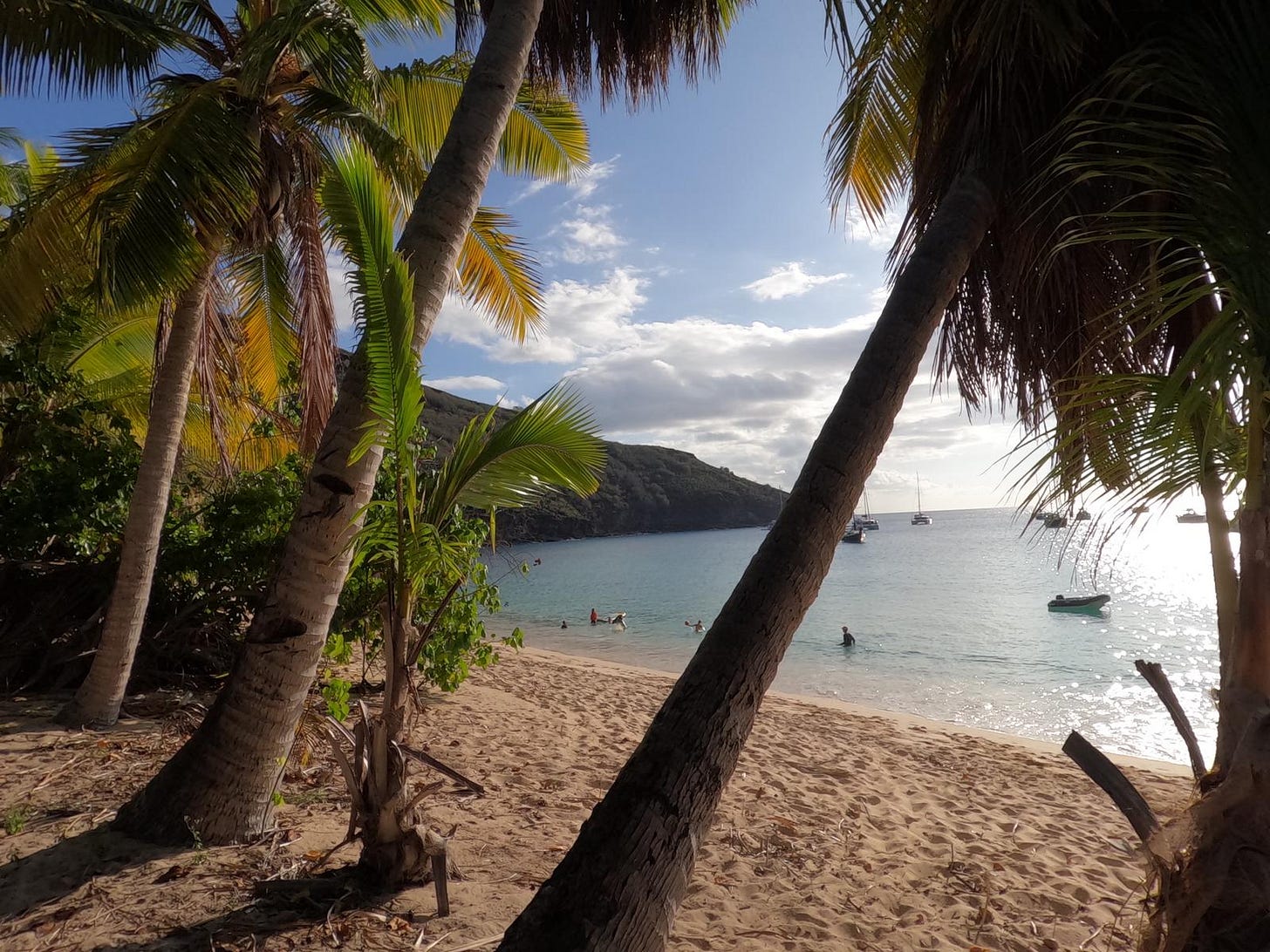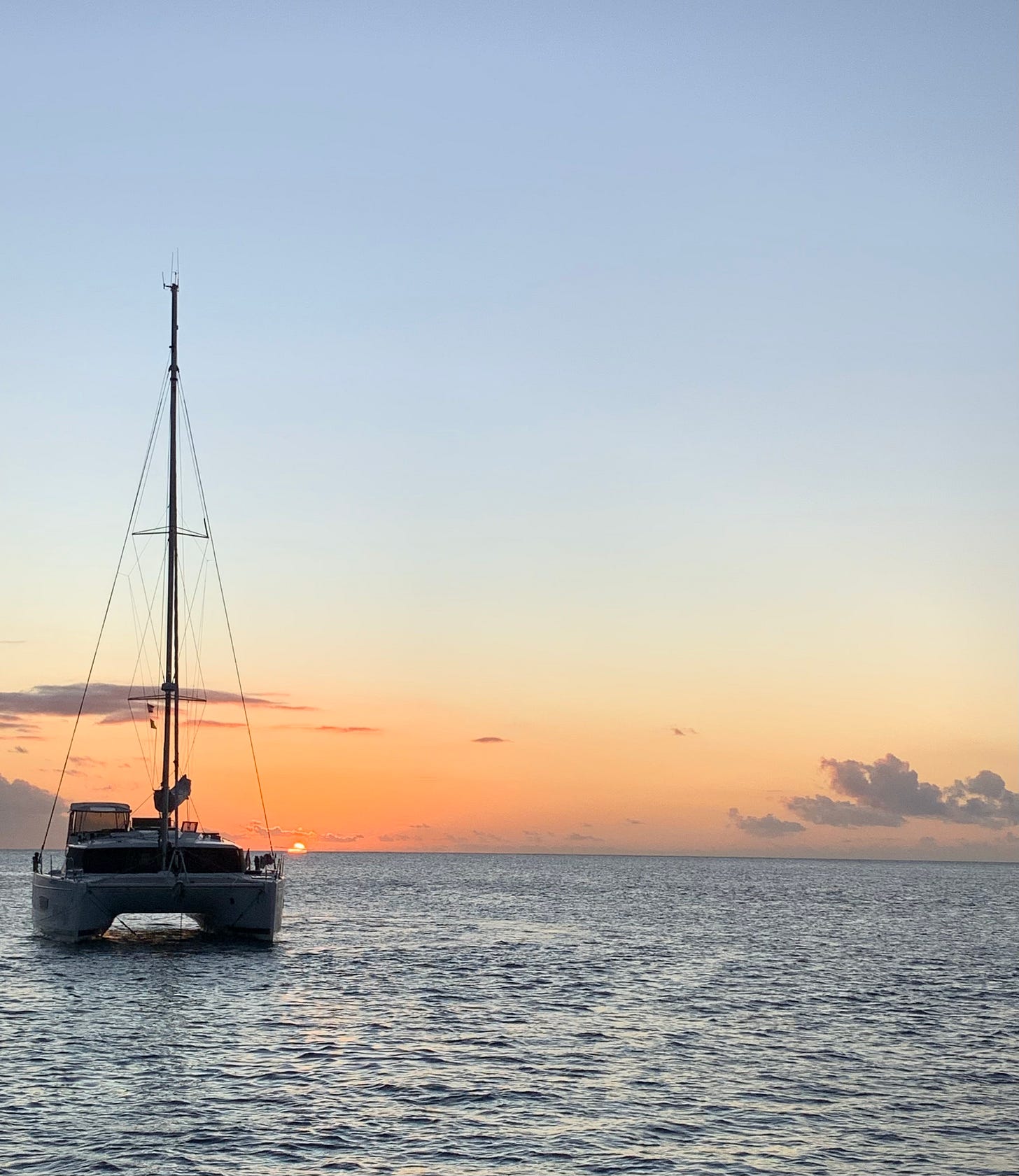Words from the South Seas
“There are but two writers who have touched the South Seas with any genius, both Americans: Melville and Charles Warren Stoddard”
April 8, 2023 view of our anchorage in the Marquesas
In January 2023 I learned of an opportunity to help move a sailing boat across the Pacific to the Marquesa Islands, the Easternmost archipelago of French Polynesia
The owner specified a recent transoceanic passage as a requirement, and as luck would have it, my second Transatlantic voyage ended in December 2022
I got the ride, eager to knock a few things off my bucket list; a transit of the Panama Canal, crossing the equator and sailing in the Southern Hemisphere, as well as a Pacific crossing
A quick survey of potential literature to take on the trip uncovered more than the usual swashbuckling suspects Treasure Island and Mutiny On The Bounty. Robert Louis Stevenson’s quote above from his In The South Seas led me to Herman Melville
Stuck in Panama City for a week waiting for a boat part to be shipped in from Miami enabled me to get a copy of Typee, Melville’s first published work
We all know Melville for his classic Moby Dick. Indeed, a few years earlier I packed that novel on a sailing trip between Massachusetts and Nova Scotia, crossing the very waters where Captain Ahab started his search for the monster white whale. However, I have to admit to being unable to finish reading the book while afloat due to a combination of Melville’s writing style, my lack of warm clothing in the chilly waters of the the Labrador Current, and a difficult watch rotation as a member of a small crew
I was not aware Melville’s first published works were based on his adventures on board whaling ships in the Atlantic and Pacific oceans. We associate him with Massachusetts and indeed he boarded the whaler Acushnet in New Bedford before setting out into Buzzards Bay on his first voyage in early January 1841
Typee is his autobiographical record of abandoning that ship in the Marquesa islands. Falling sick, he was nursed back to health by the native islanders only to find that he was a captive of one of the Nuka Hiva island tribes. He escaped onto another ship and continued Westward to Tahiti and the Society islands
It’s a great read, and Melville set me up perfectly for stepping ashore on the island of Hiva Oa, some 32 days after leaving Panama City. His descriptions of the lush tropical islands are incredibly accurate, and the lack of development there makes it easy to imagine his experiences around 180 years so ago
However, getting to the Marquesas in the 1840s was significantly more perilous than my month-long passage on a luxury cruising catamaran in the 21st century
With no Panama Canal, the Acushnet sailed down the Eastern side of North and South America, around Cape Horn and Northward past Chile to Polynesia which lies just South of the equator. The passage was almost 4 months to Cape Horn after a brief stop in Rio de Janeiro. Several months later, after searching for the planet’s biggest mammals, Melville made the decision to abandon the ship. Squalid conditions on board and with Captain Valentine Pease not knowing the meaning of health and safety regulations, it’s easy to see why Melville felt the need to escape
Reading about a historical journey to Polynesia while sailing to the exact same destination is an exhilarating experience. Witnessing locations that have remained virtually unaltered for over 180 years provides a rich backdrop for appreciating Melville’s descriptive talents
Talented writers possess the ability to immerse readers in the era and setting of their stories, a feat Melville accomplishes effortlessly. Yet, it’s rare to be both figuratively and literally situated in a nearly unaltered location
Absorbing the written words while simultaneously experiencing the actual place truly highlights Melville’s brilliance in capturing the essence of the South Seas
April 8, 2023 sunset at anchor in the Marquesas




